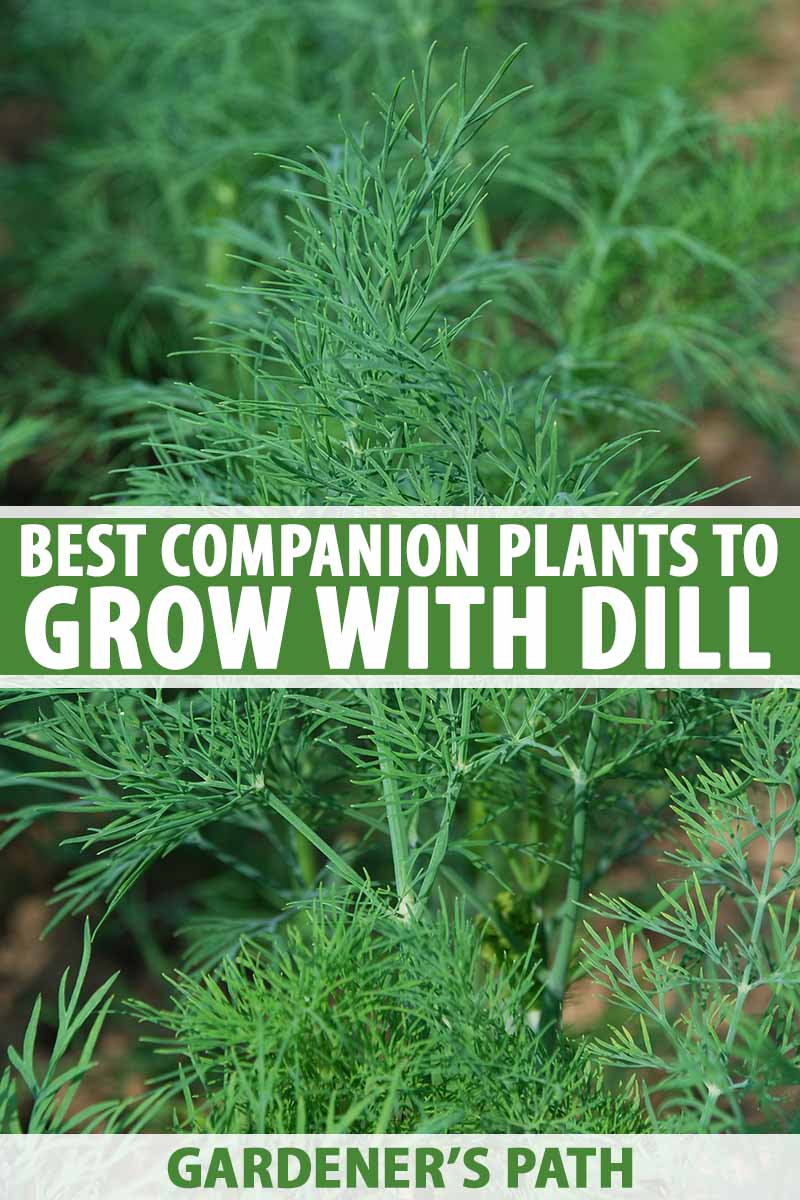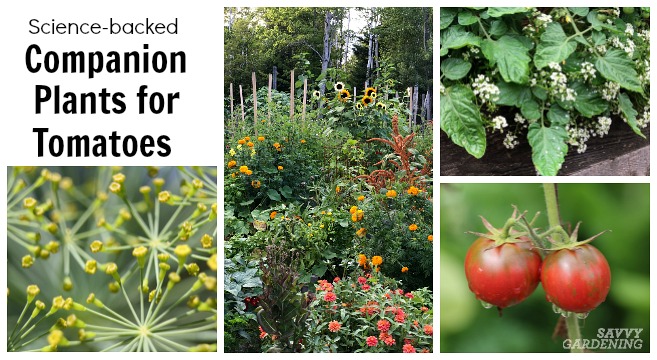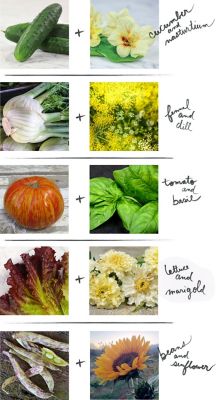The Ultimate Guide To Companion Planting With Tomatoes
The Ultimate Guide to Companion Planting with Tomatoes
Tomatoes are a popular garden vegetable that can be grown in a variety of climates. They are relatively easy to care for, but they can be susceptible to pests and diseases. Companion planting is a great way to help protect your tomatoes from these problems and to improve their overall health and productivity.
In this guide, we will discuss the benefits of companion planting with tomatoes, and we will provide a list of some of the best companion plants for tomatoes. We will also discuss some of the plants that you should avoid planting near tomatoes.
Benefits of Companion Planting with Tomatoes
There are many benefits to companion planting with tomatoes. Some of the benefits include:
- Disease and pest control: Some companion plants can help to repel pests and diseases that can harm tomatoes. For example, marigolds are known to repel nematodes, which can be a problem for tomatoes.
- Attracting beneficial insects: Some companion plants can attract beneficial insects, such as ladybugs and lacewings, which help to control pests. For example, basil is a great attractor of ladybugs.
- Improved soil health: Some companion plants can help to improve the soil health around tomatoes, which can lead to healthier plants. For example, beans and peas can help to fix nitrogen in the soil, which is a nutrient that tomatoes need.
- Increased yields: Companion planting can help to increase the yields of tomatoes. This is because some companion plants can help to improve the pollination of tomatoes, which can lead to more fruit.
Best Companion Plants for Tomatoes
Here is a list of some of the best companion plants for tomatoes:
- Basil: Basil is a classic companion plant for tomatoes. It helps to repel pests and diseases, and it also enhances the flavor of tomatoes.
- Marigolds: Marigolds are another great companion plant for tomatoes. They help to repel nematodes, and they also attract beneficial insects.
- Borage: Borage is a flowering plant that helps to attract pollinators, such as bees and butterflies. It also helps to improve the soil health around tomatoes.
- Beans and peas: Beans and peas are nitrogen-fixing plants, which means that they can help to improve the nitrogen levels in the soil around tomatoes.
- Carrots: Carrots help to break up the soil around tomatoes, which can improve drainage and aeration. They also help to repel nematodes.
- Parsley: Parsley is a flowering herb that helps to attract pollinators. It also helps to improve the soil health around tomatoes.
- Garlic: Garlic is a strong-smelling herb that helps to repel pests and diseases. It also helps to improve the flavor of tomatoes.
- Onions: Onions are similar to garlic in that they help to repel pests and diseases. They also help to improve the flavor of tomatoes.
Plants to Avoid Planting Near Tomatoes
There are a few plants that you should avoid planting near tomatoes. These plants include:
- Cabbage: Cabbage and other members of the brassica family can compete with tomatoes for nutrients.

- Corn: Corn can attract corn earworm, which can also harm tomatoes.
- Fennel: Fennel can stunt the growth of tomatoes.
- Dill: Dill can attract pests and diseases that can harm tomatoes.

- Potatoes: Potatoes and tomatoes are both susceptible to the same diseases, so it is best to avoid planting them near each other.
- Eggplant: Eggplant is a member of the nightshade family, just like tomatoes. Planting them together can increase the risk of disease.

Conclusion
Companion planting is a great way to improve the health and productivity of your tomato plants. By planting the right companion plants near your tomatoes, you can help to repel pests and diseases, attract beneficial insects, and improve the soil health around your plants.
Tomatoes are a delicious and versatile vegetable that can be enjoyed in many different ways. But did you know that there are certain plants that can help to improve the growth and flavor of tomatoes? These are known as companion plants, and they can provide a number of benefits to tomato plants.
Some of the best companion plants for tomatoes include:
- Marigolds: Marigolds are a great companion plant for tomatoes because they help to deter pests. The strong scent of marigolds is unpleasant to many insects, including tomato hornworms and aphids.
- Basil: Basil is another great companion plant for tomatoes. It helps to improve the flavor of tomatoes, and it can also help to repel pests.
- Chives: Chives are a good companion plant for tomatoes because they help to improve the soil quality. They release sulfur into the soil, which helps to reduce the incidence of diseases.
- Asparagus: Asparagus is a good companion plant for tomatoes because it helps to improve the drainage of the soil. This is important for tomatoes, as they do not like to sit in wet soil.
If you are looking to improve the growth and flavor of your tomatoes, I recommend planting some companion plants. You can find more information about good companion plants for tomatoes at Gardenia Inspiration.
FAQ of good companions for tomatoes
Q: What are some good companion plants for tomatoes?
A: There are many good companion plants for tomatoes, but some of the most popular include:
- Basil: Basil is a classic companion plant for tomatoes, and for good reason. It helps to repel pests such as thrips and tomato hornworms, and it also enhances the flavor of tomatoes.
- Marigolds: Marigolds are another great companion plant for tomatoes. They help to repel nematodes, which can be a major problem for tomato plants.
- Garlic: Garlic is a strong-scented herb that helps to repel a variety of pests, including aphids, spider mites, and whiteflies.
- Onions: Onions are similar to garlic in that they have a strong scent that repels pests. They also help to improve the flavor of tomatoes.
- Chives: Chives are another member of the allium family, and they have similar pest-repelling properties to garlic and onions. They also help to improve the flavor of tomatoes.
Q: What are some plants that should not be planted near tomatoes?
A: There are a few plants that should not be planted near tomatoes, as they can compete for nutrients or attract pests. These plants include:
- Potatoes: Potatoes and tomatoes are both members of the nightshade family, and they can compete for nutrients.
- Cucumbers: Cucumbers and tomatoes can attract the same pests, so it is best to avoid planting them near each other.
- Peppers: Peppers and tomatoes can also attract the same pests, so it is best to avoid planting them near each other.
Q: What is the best time to plant tomatoes with companion plants?
A: The best time to plant tomatoes with companion plants is in the spring, after the last frost. This will give the plants time to establish themselves before the hot summer weather arrives.
Q: How far apart should tomatoes and companion plants be planted?
A: The spacing requirements for tomatoes and companion plants will vary depending on the specific plants involved. However, as a general rule, tomatoes should be spaced 2-3 feet apart, and companion plants should be spaced 1-2 feet apart.
Q: What are some other benefits of companion planting with tomatoes?
A: In addition to helping to repel pests, companion planting with tomatoes can also provide other benefits, such as:
- Improved pollination: Some companion plants, such as basil, can attract pollinators, which can help to improve pollination of tomato plants.
- Increased yields: Companion planting can help to increase yields of tomato plants by providing them with nutrients and support.
- Improved soil health: Companion planting can help to improve soil health by attracting beneficial insects and microorganisms.
Image of good companions for tomatoes
Here are 5 different images of good companions for tomatoes from Pinterest:
- Basil: Basil is a classic companion plant for tomatoes. It helps to deter pests, attract pollinators, and improve the flavor of tomatoes.
- Cucumbers: Cucumbers and tomatoes can be planted together because they have similar growing requirements. They also help to shade each other, which can help to prevent blossom end rot in tomatoes.
- Marigolds: Marigolds are another great companion plant for tomatoes. They help to repel pests, such as nematodes and whiteflies.
- Onions: Onions can help to deter pests, such as aphids and tomato hornworms. They also help to improve the flavor of tomatoes.
- Spinach: Spinach can be planted around tomatoes to help suppress weeds. It also helps to improve the flavor of tomatoes.


Post a Comment for "The Ultimate Guide To Companion Planting With Tomatoes"